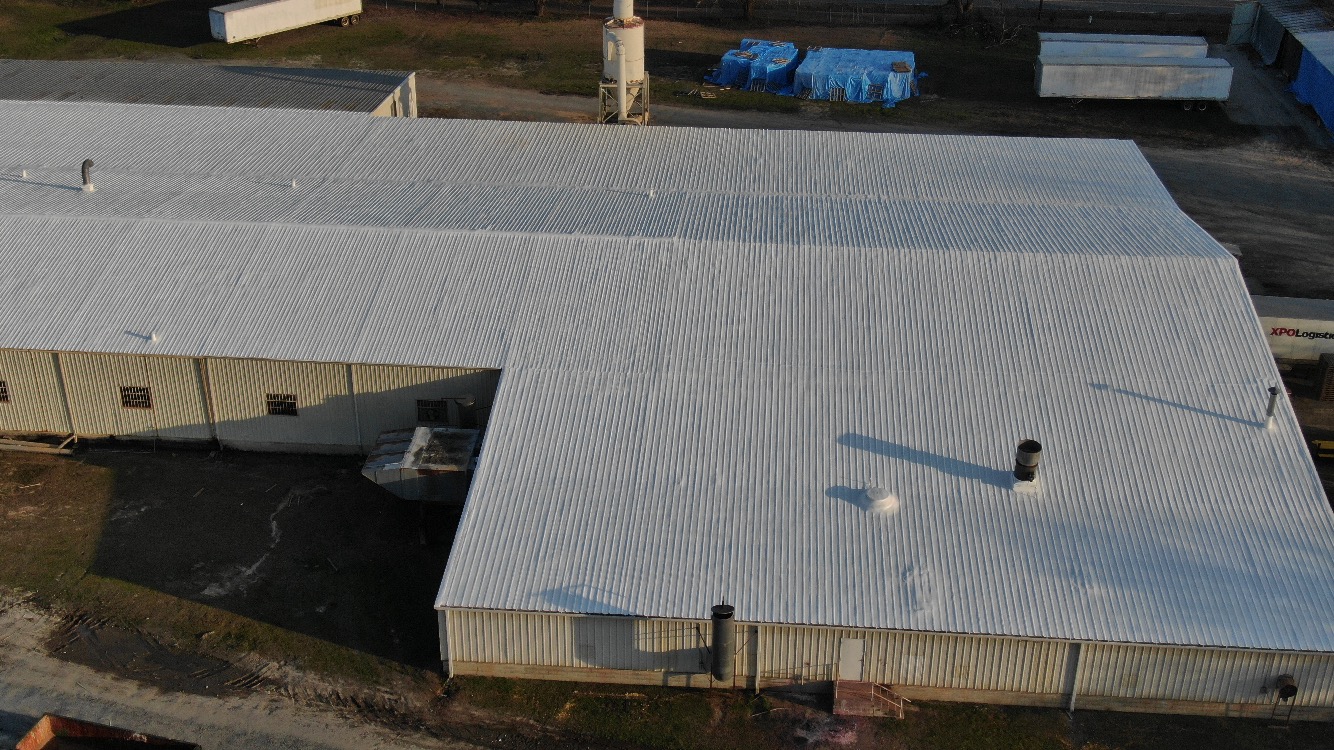
Winterizing Your Commercial Roof: Cold-Weather Benefits of Rugged Roofing System and Simple Steps to Follow Winter Maintenance
As winter approaches, property owners are on the lookout for roofing solutions that not only provide robust protection against the elements but also offer insulation to combat the cold. The Rugged Roofing System, a powerful combination of Accufoam Spray Foam and Rugged Roof Coatings, is designed to excel during the winter months. Below we will explore the benefits of this integrated system, focusing on its ability to insulate effectively and reduce energy costs, while also discussing maintenance tips for cold weather.
Understanding the Rugged Roofing System:
The Rugged Roofing System is a comprehensive solution that combines the strengths of Accufoam Spray Foam and Rugged Roof Coatings. Accufoam Spray Foam is a high-performance insulation material that seamlessly adheres to various surfaces, creating a continuous barrier. Paired with Rugged Roof Coatings, this system not only fortifies your roof against harsh winter weather but also enhances energy efficiency.
Benefits of the Rugged Roofing System in Winter:
1. Superior Insulation:
Accufoam Spray Foam, a key component of the Rugged Roofing System, provides exceptional insulation by forming a continuous layer that seals gaps and voids. This insulation not only keeps your property warmer during the winter months but also contributes to maintaining a consistent and comfortable indoor temperature.
2. Reduction in Energy Costs:
The Rugged Roofing System’s outstanding insulation properties directly translate into energy savings. By minimizing heat loss through the roof, property owners can experience reduced heating costs during the winter. This not only benefits your bottom line but also aligns with sustainable and energy-efficient building practices.
3. Prevention of Ice Dams:
The insulation provided by the Rugged Roofing System helps prevent the formation of ice dams—a common issue in colder climates. By maintaining a uniform roof temperature, the risk of ice dams and associated water damage is significantly reduced, enhancing the overall durability of your roof.
Understanding Silicone and Acrylic Coatings:
Before delving into winter preparation, it’s crucial to understand the distinct benefits of silicone and acrylic coatings as well. Rugged Coatings offers high-quality solutions designed to enhance the durability and weather resistance of commercial roofs. Both Silicone and Acrylic coatings offer excellent UV resistance, have great waterproofing properties, offer ease of application and resistance to weathering. For more information on the differences between silicone and acrylic coatings, click here to check out our article describing the benefits of each option.
Maintenance Tips
As winter approaches, property owners need to pay special attention to the maintenance and care of their commercial roofs. Below are some essential steps to prepare your coated roof for the winter months, ensuring longevity and optimal performance.
Winter-Ready Roof Maintenance:
1. Inspect for Damage:
Begin by conducting a thorough inspection of your commercial roof. Look for any signs of damage, such as cracks, blisters, or peeling. Addressing these issues before winter sets in will prevent further damage caused by freezing temperatures and snow accumulation.
2. Clean the Surface:
Clear debris, leaves, and any other materials that may have accumulated on the roof during the fall. This step is crucial, as debris can trap moisture and contribute to the deterioration of your roof coating over time.
3. Repair and Patch:
If any damage is detected during the inspection, prioritize repairs. Addressing these issues promptly will prevent water infiltration during winter rains and snow.
Winter-Specific Tips for Silicone Coatings:
1. Check for Adhesion:
Silicone coatings are known for their exceptional adhesion properties. However, it is essential to inspect for any areas where the coating may have lost adhesion. Reapply silicone coating to these spots to maintain a seamless and watertight surface.
2. Snow Removal:
While silicone coatings are highly resistant to snow and ice, it’s still advisable to remove excess snow to prevent overloading. Use a roof rake or hire professionals to clear accumulated snow, especially in areas prone to heavy snowfall.
3. Monitor Expansion Joints:
Silicone coatings accommodate the natural movement of the roof due to temperature fluctuations. Regularly inspect expansion joints to ensure they remain intact and functional. Reapply silicone coating if any signs of wear or separation are detected.
Winter-Specific Tips for Acrylic Coatings:
1. Inspect for Flexibility:
Acrylic coatings provide flexibility, which is vital in cold weather. Check for any signs of stiffness or brittleness that may have developed over time. If necessary, apply an additional coat of acrylic coating to maintain flexibility.
2. Address Ponding Water:
Acrylic coatings may be susceptible to ponding water in low areas of the roof. Ensure proper drainage to prevent water from accumulating and potentially compromising the coating by freezing. Consider installing additional drains or adjusting the slope if needed.
Protection for the Future
Remember, a well-maintained roof not only protects your property but also contributes to energy efficiency and cost savings in the long run, and investing in the Rugged Roofing System is a proactive step toward fortifying your property against winter challenges. The combination of Accufoam Spray Foam and Rugged Roof Coatings not only provides superior insulation but also contributes to energy efficiency and overall structural resilience. As winter approaches, trust the Rugged Roofing System to keep your property warm, dry, and energy-efficient, ensuring a comfortable and cost-effective environment throughout the colder months.


